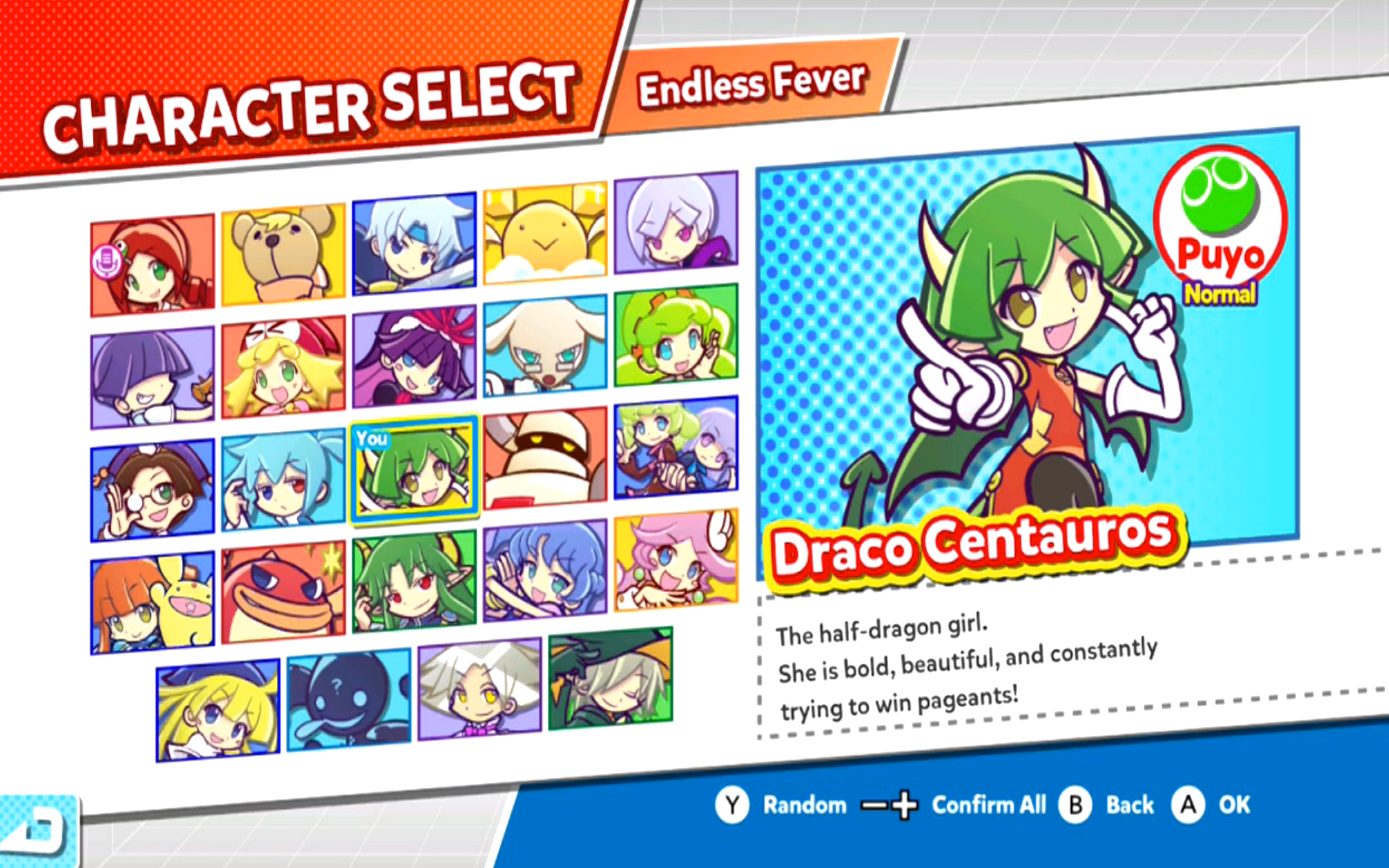
The onus is on the player not only to become proficient at both games, but to develop a reflex to juggle them together. In many ways Swap mode is really just training wheels for this more fully realized crossover. Like mixing oil with water, tetronimoes always sink to the bottom of the board and puyos float above them. This mode isn’t a totally incomprehensible mess of blocks and blobs. Tetronimoes and puyos will be cued up randomly, with certain pieces that even periodically switching between one or the other as they fall. Where Swap mode has you playing fairly vanilla versions of these two games, each on their own neatly squared away boards, “Fusion” mode has both puzzle games played on the same board. It achieved that belly rubbing and head patting coordination balance just right for my brain.īy comparison, the other crossover modes are like eight dimensional chess. Keeping my lopsided skill set in mind, this was the easiest crossover mode for me to wrap my head around. Play the games better than your opponent and you’ll send them junk blocks or puyos until they become unmanageably screen filling. After a set interval of time the Tetris game board is put on hold and swapped for Puyo Puyo, or vice versa. Either playing against a CPU or another person, you play either Tetris or Puyo Puyo. As someone who feels they’re at least competent at Tetris but a fledgling-at-best puyo plopper, I found myself gravitating toward the “Swap” crossover mode.

These are nice to have, but the crossover modes are where things get interesting. There are typical non-crossover modes that would be found in a regular Puyo Puyo or Tetris title. Even the menus have a similar flair in the way that their many, many layers and sub-menus are filed away. There’s a shared meticulousness to all the extra skins and game options that cater to the most obsessive tastes. director (and creator of a forgotten DS falling block puzzle game Meteos) Masahiro Sakurai was secretly at the helm.

The mileage this game gets out of having these two prominent puzzle games in terms of the breadth of game options and extras makes it seem like Super Smash Bros. This fusion makes it into something of a game of rubbing your belly and patting your head – managing two cognitive functions – as much as it’s the regular challenge of playing either one game effectively. It’s these two very different ways in which each puzzle game approaches the thought process behind combos that makes Puyo Puyo Tetris an interesting crossover. Because puyos have more elaborate physics than tetronimos, combos have to be stacked and set up vertically, keeping in mind how puyos at the top of a stack will land on a matching color set up at the bottom. Combos here require a different kind of forward planning than Tetris. Match four or more of the same color and that group will disappear. In Puyo Puyo, the player directs two-piece falling jelly-like puyos, each one a different color. Complete multiple lines subsequently to score extra combo points. A complete horizontal row scores points and disappears, leaving more room to stack more blocks. If I really need to explain this, in a regular game of Tetris you place falling blocks in a grid. Going into Puyo Puyo Tetris, I was well acquainted with Tetris and just sort of floundering around with the Puyo Puyo game modes. The last time a Puyo Puyo game saw an official international release was on GameCube in 2004.
#PUYO PUYO TETRIS SWITCH SERIES#
It goes without saying that Tetris is well known in the west with its release on every platform imaginable, though SEGA’s Puyo Puyo series is far less renowned internationally as it is in Japan. With the Switch version as a Japanese launch title, it’s finally getting localized, albeit two months late. Puyo Puyo Tetris – a crossover of Puyo Puyo and Tetris – has been around in Japan since 2014, having released on just about every platform.


 0 kommentar(er)
0 kommentar(er)
